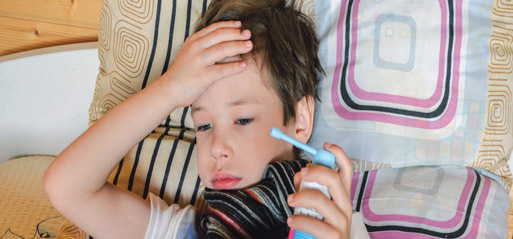
(Photo credit: Public Domain)
Due to a rise in the number of cases of Strep A infections, health officials are urging parents to be aware of the symptoms of scarlet fever, which is linked to Strep A infection.
The number of reported cases of scarlet fever is significantly higher this year than is normally expected for this time of the year; there were 851 cases reported in week 46 compared with an average of 186 in the preceding years. Since September, 15 children in the UK have died after invasive Strep A infections.
Healthcare professionals are now attempting to educate parents about the symptoms of scarlet fever, and information has been distributed to parents via schools and colleges on what to look out for, and what to do if they suspect their child has a potential Strep A infection.
Streptococcus A is a common bacterium that can cause sore throats and skin infections. Cases tend to increase in the winter and peak in the spring, but figures show they are rising earlier than usual this year. Usually, Strep A infections are mild, but in some cases, they can cause more serious illnesses like Scarlet fever, which is associated with a high temperature, sore throat and a rash that can cause redness on the cheeks and skin that feels rough to the touch like sandpaper.
Another symptom can be a red or ‘strawberry tongue’. Being a bacterial infection, Strep A can be treated with antibiotics. Whilst Strep A rarely cause serious illness, it can become more invasive in a few cases, such as entering the lungs or bloodstream (known as “invasive group A”, or “iGAS”), necessitating immediate medical attention.
Symptoms can include high temperatures, feeling drowsy, having a poor appetite and dehydration.
The last significant number of cases occurred in the 2017/18 season, when there were 27 deaths in children under 18 and 328 adult deaths in England, according to the UK Health Services Authority. Since September of this year, there have been 85 cases of invasive Strep A in children aged one to four in England and 60 in children aged five to nine, although the majority of cases are in people over 45.
Parents are being advised to watch for symptoms associated with Strep A infections and scarlet fever and to trust their instincts if they feel their child seems seriously ill. It can be difficult at this time of the year to confidently distinguish between symptoms of other seasonal infections such as colds, flu and other respiratory illnesses, which is why being familiar with the symptoms of scarlet fever is important.
Scarlet fever, which is caused by Step A bacteria, is usually a mild illness and is treatable with antibiotics. It is contagious and can be passed from one person to another; it is also a notifiable disease, meaning GPs need to report cases to the Director of Public Health. It is much more common in children than in adults.
Symptoms to look out for
The rash of scarlet fever often begins with small spots on the body that then spread to the neck, arms and legs over the next 1-2 days. It is often “sandpaper” like to touch but is not itchy. On darker skin, the rash can be more difficult to see but will have a “sandpapery” feel.
A bright red ‘strawberry’ tongue
Fever (temperature of 38°C+)
Painful, swollen glands in the neck
Sore throat/tonsillitis
Strep A can also cause a range of other types of infections such as skin infection impetigo and a severe sore throat or tonsillitis.
Call NHS 111 or your GP if you suspect your child has scarlet fever because early treatment with antibiotics is important to reduce the risk of complications, such as pneumonia or bloodstream infection (iGAS) and it helps to reduce the spread of the disease to other people.
If your child has scarlet fever, keep them at home for at least 24 hours after the start of antibiotic treatment to avoid spreading the infection to others. Parents are advised to either call their local GP surgery or contact NHS 111 if they suspect their child has scarlet fever or if:
your child is unwell and is getting worse
your child is feeding or eating much less than normal
your child has fewer wet nappies than usual or is peeing less than usual, or shows other signs of dehydration
your baby is under 3 months and has a temperature of 38C, or is 3 to 6 months and has a temperature of 39C+
your child is very tired or irritable
your child is having difficulty breathing – they may make grunting noises, or you may notice their tummy sucking under their ribs
there are pauses when your child breathes
your child’s skin, tongue or lips are blue or grey – on black or brown skin this may be easier to see on the palms of the hands or soles of the feet
your child is floppy and will not wake up or stay awake
Group A Strep is spread by close contact with an infected person and can be transmitted through coughs and sneezes or from a wound. To prevent the spread of Strep A, it is important to observe some basic hygiene practices, such as washing hands regularly, catching coughs and sneezes in a tissue and then disposing of the tissue in the bin. To prevent the spread of illness, keep children who are ill and have a fever at home.
Rachel Kayani